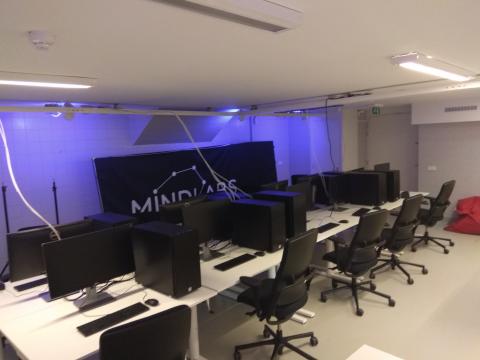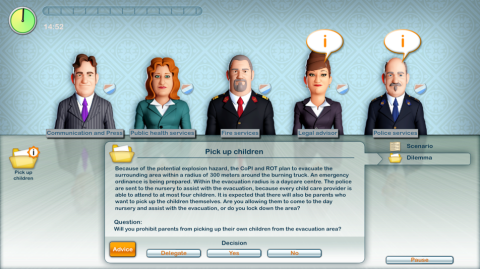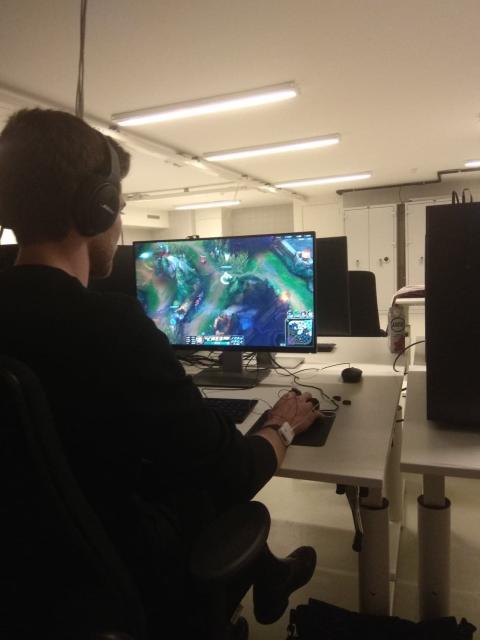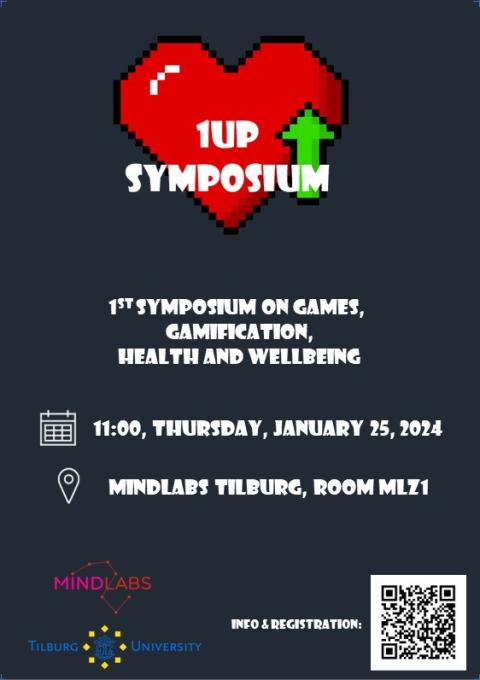Symposium on games and the Game Lab
The Game Lab has existed since the conception of MindLabs. It began in the basement room in Deprez, where an 'island' of 10 computers was set-up: two rows of desks (5 computers each) facing each other. Computers were equipped with all sorts of peripherals for data collection - headsets, microphones, webcams and physiological sensors. One of the upcoming events is the 1UP symposium on games, gamification, health and wellbeing on 25th of January.
The game lab has existed since the conception of MindLabs (2018). It was an initiative of Pieter Spronck and Paris Mavromoustakos Blom who envisioned a space where games of all sorts (video games, board games, physical games, etc.) could be played for research purposes.
The ten computer setup would allow for data collection from both team games (teams of 2 to 10 people) and 'solo' games (multiple players simultaneously).
The first experiments that were run were linked to Blom's PhD project (DATA2GAME). The project discussed games for crisis management training through a serious game, namely The Mayor's Game.
Other experiments took place as well, with in-game, physiological and post-game responses/behavior of players playing under various levels of time pressure and information load.
At the same time, as a side-project, Blom collaborated with TSEA Link - the University's e-sports association. They were interested in playing competitive team games, such as League of Legends, in the Dutch College League - a multi-week tournament handing out prizes to the best college teams in the Netherlands. Physiological and mouse & keyboard behavior were monitored during gameplay and they examined whether patterns could be found in that data relating to game, and competition-induced, stress.
In May 2019, an in-person Hearthstone tournament was organized. Hearthstone is a competitive digital card game. Players' facial expressions were recorded through the webcam, as well as their game screen, in order to conduct studies on players' facial behavior during competitive 1 vs. 1 games.
During this period, other researchers used the game lab in order to run experiments. Notably, Gianluca Guglielmo ran a series of studies that showed how game players' eye blinking patterns can be analyzed to estimate their level of expertise in single player games.
In addition, Kyana van Eijndhoven conducted a study on team coordination through a collaborative video game called Lovers in a Dangerous Spacetime.
During the science weekend, Blom demonstrated a serious game for physical therapy that he has developed. The goal of the game is to use motor (core) movements in order to fly an airplane through successive targets. Such games have been proven to make therapy less monotonous (more engaging). He and his team have conducted a study (and are planning more) in order to create a pipeline for personalized physical therapy through video games and motion capture sensors.
One of the upcoming events is the 1UP symposium on games, gamification, health and wellbeing. Speakers have been invited from Dutch and international universities to discuss topics related to how games can be leveraged to improve and/or maintain a healthy population.





